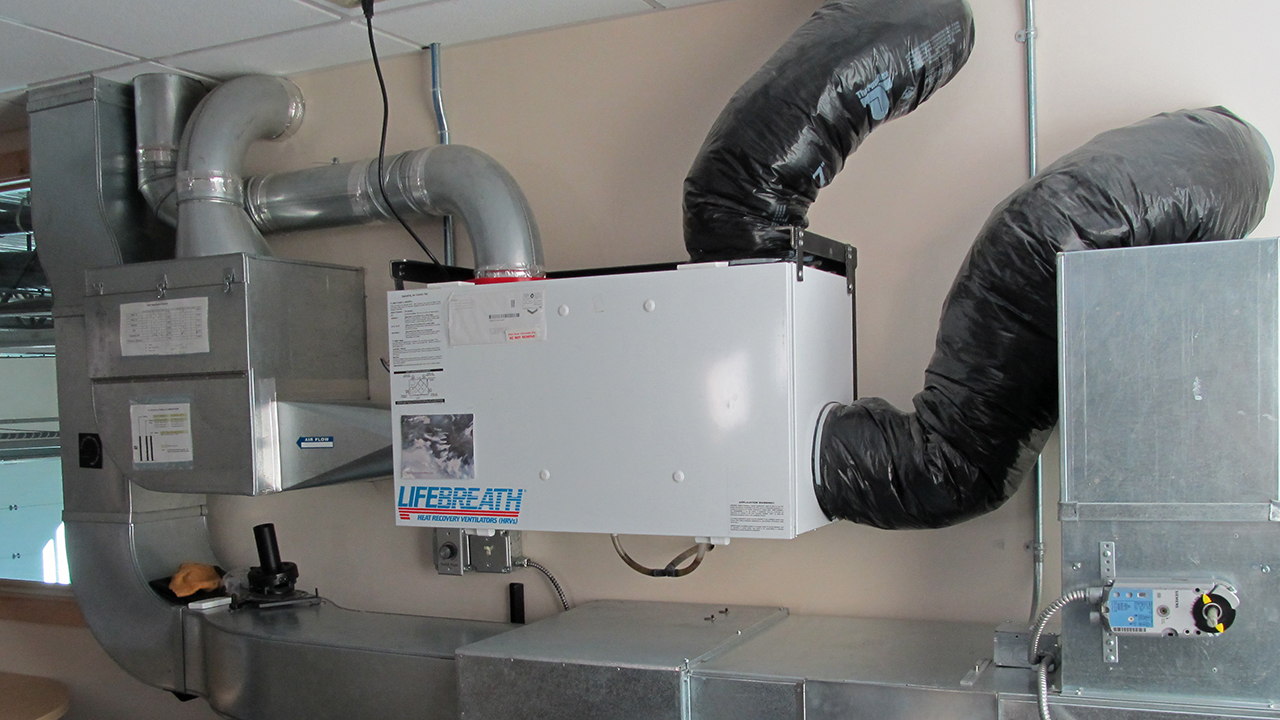HRV Demystified: What Every Homeowner Must Understand
Wiki Article
Exactly How Heat Recovery Ventilation Boosts Indoor Air Quality and Reduces Power Expenses
Heat Recovery Ventilation (HRV) systems play a necessary role in enhancing indoor air quality while simultaneously decreasing energy expenditures. By successfully exchanging stagnant indoor air with fresh outdoor air, HRVs aid maintain perfect humidity and lower contaminants. In addition, their ability to recuperate warm from outgoing air reduces the stress on home heating and cooling down systems. As energy prices remain to climb, understanding the complete potential of HRV systems ends up being progressively important for house owners and organizations alike.Recognizing Heat Recovery Ventilation Solutions

Heat recovery ventilation (HRV) systems play an important duty in enhancing indoor air high quality, specifically in modern-day, energy-efficient structures. These systems are created to move heat from the outward bound stale air to the inbound fresh air, thus decreasing power loss while maintaining suitable temperature levels inside your home. HRVs include a warm exchanger, fans, and ductwork, helping with the constant blood circulation of air. By eliminating interior contaminants and introducing fresh air, HRVs help to stabilize moisture levels, prevent mold growth, and reduce irritants. The effectiveness of HRV systems hinges on their capability to recover up to 80% of the warm from the exhausted air, advertising power conservation while guaranteeing a healthy and balanced interior environment. Their integration is vital in attaining lasting living methods.
The Importance of Indoor Air Top Quality
Indoor air quality (IAQ) is a critical factor influencing the health and wellness and wellness of residents in any type of atmosphere. Poor IAQ can bring about different health problems, consisting of respiratory troubles, allergies, and exhaustion. Additionally, it can exacerbate present problems such as asthma. Elements adding to reduced IAQ include pollutants from indoor sources like cleaning up representatives, mold, and insufficient air flow. Keeping good IAQ is important for promoting a secure and comfy living or functioning space. Effective strategies to improve IAQ include normal tracking of air quality, correct ventilation systems, and minimizing the usage of dangerous materials inside. By prioritizing IAQ, individuals can assure a healthier setting that cultivates performance and overall lifestyle.Power Performance Advantages of HRV Systems
Lots of property owners and building managers are significantly identifying the energy efficiency benefits of warm recuperation air flow (HRV) systems. By moving warm from worn down interior air to inbound fresh air, HRV systems markedly minimize the energy needed for heating & cooling. This procedure decreases reliance on conventional cooling and heating systems, bring about lower power bills. Additionally, HRVs assist maintain a well balanced interior climate, preventing too much home heating or cooling needs. The ability to recover as much as 90% of the warm from outward bound air additionally supports sustainability efforts by decreasing total power usage. Consequently, HRV systems contribute not just to set you back savings yet also to a reduced carbon impact, straightening with the growing focus on energy-efficient structure practices.Installment and Upkeep Considerations
The effective application of warm recovery ventilation (HRV) systems requires careful factor to consider of setup and maintenance variables to guarantee peak efficiency. Proper positioning of the HRV unit is vital, as it should be installed in a place that takes full advantage of air movement while lessening sound disturbance. Furthermore, ductwork has to be properly sized and protected to stop power loss. Routine upkeep, including filter replacement and system cleansing, is critical to protect optimal capability and indoor air high quality. Proprietors ought to establish a regular upkeep schedule to recognize and attend to possible concerns prior to they intensify. Partnership with my blog skilled specialists during both installment and maintenance phases can boost the longevity and effectiveness of HRV systems, inevitably causing much better indoor settings and decreased energy prices.
Real-World Applications and Success Stories
Exploring real-world applications of warm recovery ventilation (HRV) systems reveals their significant influence on indoor air top quality and power performance across various settings. In domestic structures, homeowners have actually reported enhanced air top quality, leading to fewer allergic reactions and respiratory problems. Schools applying HRV systems have kept in mind enhanced pupil concentration and decreased absence because of far better ventilation. Business structures, such as workplaces and retail rooms, have actually experienced lower power prices and find out increased employee performance. For instance, a corporate office in a temperate environment attained a 30% decrease in power costs after setting up an HRV system. These success tales show that HRV modern technology not just contributes to healthier environments however additionally offers substantial monetary benefits, making it a useful investment for different industries.Often Asked Concerns
Can HRV Solutions Decrease Allergens in Indoor Air?
The effectiveness of HRV systems in minimizing indoor irritants mostly pivots on their capability to filter and exchange air. HRV Heat Recovery Ventilation. By constantly changing stale air, these systems can significantly decrease allergen degrees throughout indoor atmospheres
Just How Does Humidity Affect HRV System Efficiency?
Moisture considerably affects HRV system performance; high levels can bring about condensation, minimizing efficiency, while low humidity may enhance air exchange. Stabilizing humidity is crucial for suitable operation and keeping indoor air top quality.Are HRV Systems Noisy Throughout Operation?
HRV systems can produce varying noise levels during operation, depending on their style and installment. Some systems run quietly, while others may produce obvious audio, specifically at higher air flow settings or when badly preserved.What Is the Ordinary Lifespan of an HRV System?

Can HRV Systems Be Utilized in All Environments?
HRV systems can helpful site be used in numerous climates, but their efficiency may differ - HRV Heat Recovery Ventilation. In extreme temperatures, changes or extra systems could be required to assure perfect performance and comfort while keeping interior air qualityReport this wiki page